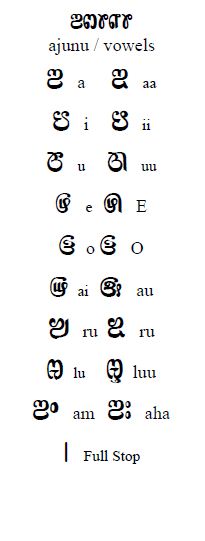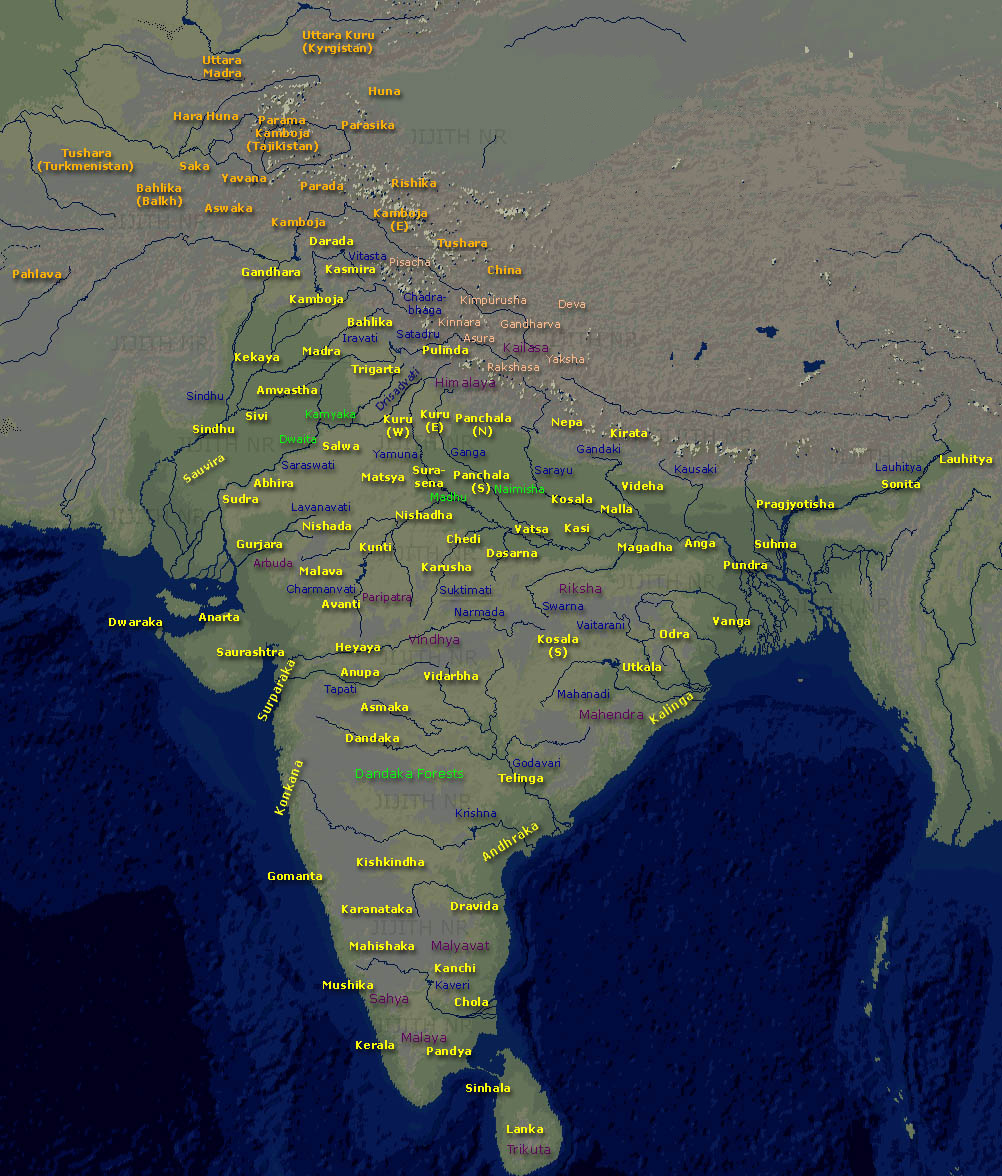|
Sourashtra
Saurashtra ( Saurashtra script: , Tamil script: аЃЪаѓМаЃ∞аЃЊаЃЯаѓНаЃЯаЃњаЃ∞ аЃЃаѓКаЃіаЃњ, Devanagari script: а§Єа•Ма§∞а§Ња§Ја•На§Яа•На§∞ а§≠а§Ња§Ја§Њ) is an Indo-Aryan language spoken primarily by the Saurashtrians of Southern India who migrated from the Lata region of present-day Gujarat to south of Vindhyas in the Middle Ages. Saurashtra, an offshoot of Sauraseni Prakrit, once spoken in the Saurashtra region of Gujarat, is now chiefly spoken in various places of Tamil Nadu and are mostly concentrated in Madurai, Thanjavur and Salem Districts. The language has its own script of the same name, but is also written in the Tamil, Telugu, and Devanagari scripts. The Saurashtra script is of Brahmic origin, although its exact derivation is not known. Unlike most of the surrounding Dravidian languages, Saurashtra is Indo-European. There is some debate amongst speakers of the Saurashtra language as to which script is best suited to the language. Material was copied from this ... [...More Info...] [...Related Items...] OR: [Wikipedia] [Google] [Baidu] |
Saurashtra Script
The Saurashtra script is an abugida script that is used by Saurashtrians of Tamil Nadu to write the Saurashtra language. The script is of Brahmic origin, although its exact derivation is not known which was later reformed and standardized by T.M.Ram Rai. Its usage has declined, and the Tamil and Latin scripts are now used more commonly. Description and background The Saurashtra Language of Tamil Nadu is written in its own script. In contrast, the inhabitants of Saurashtra utilize the Gujarati script. Because this is a minority language not taught in schools, people learn to write in Saurashtra Script through Voluntary Organisations like Sourashtra Vidya Peetam, Madurai. Saurashtra refers to both the language and its speakers; Saurashtra is also an area in Gujarat, India which was the home of the Saurashtra community prior to their southward migration. Vrajlal Sapovadia describes the Saurashtra language as a hybrid of Gujarati, Marathi & Tamil. The language has had its own sc ... [...More Info...] [...Related Items...] OR: [Wikipedia] [Google] [Baidu] |
Saurashtra People
The Saurashtra people, or Saurashtrians, are an Indo-Aryan ethno-linguistic Hindu Brahmin community of South India who speak the Saurashtra language, an Indo-Aryan language, and predominantly reside in the Indian states of Tamil Nadu, Kerala, Andhra Pradesh and Karnataka. Saurashtrians trace their ancestry to the historical region of Saurashtra in Western India. Their migration to Southern India owes to the forays and desecration of the Somnath temple triggered by the frequent Muslim invasions, most notably by Mahmud Ghazni. They were a prominent industrious and prosperous mercantile community of merchants and weavers in southern India until the 20th century. Saurashtrians are Brahmins, and are also referred to as Saurashtra Brahmins. Further, like all traditional orthodox Brahmins, they are classified based on their gotra, or patrilineal descent. The majority of the people are Vaishnavas, though there is a significant proportion of Shaivas as well. They are pr ... [...More Info...] [...Related Items...] OR: [Wikipedia] [Google] [Baidu] |
Saurashtra (region)
Saurashtra, also known as Sorath or Kathiawar, is a peninsular region of Gujarat, India, located on the Arabian Sea coast. It covers about a third of Gujarat state, notably 11 districts of Gujarat, including Rajkot District. It was formerly a state of India before it merged with Bombay state. In 1961 it separated from Bombay and joined Gujarat. Location Saurashtra peninsula is bound on the south and south-west by the Arabian sea, on the north-west by the Gulf of Kutch and on the east by the Gulf of Khambhat. From the apex of these two gulfs, the Little Rann of Kutch and Khambhat, waste tracts half salt morass half sandy desert, stretch inland towards each other and complete the isolation of Kathiawar, except one narrow neck which connects it on the north-east with the mainland of Gujarat. The peninsula is sometimes referred to as Kathiawar after the Kathi Darbar, which once ruled most of the region. However, Saurashtra is not entirely synonymous with Kathiawar, since a ... [...More Info...] [...Related Items...] OR: [Wikipedia] [Google] [Baidu] |
Madurai
Madurai ( , also , ) is a major city in the Indian state of Tamil Nadu. It is the cultural capital of Tamil Nadu and the administrative headquarters of Madurai District. As of the 2011 census, it was the third largest Urban agglomeration in Tamil Nadu after Chennai and Coimbatore and the 44th most populated city in India. Located on the banks of River Vaigai, Madurai has been a major settlement for two millennia and has a documented history of more than 2500 years. It is often referred to as "Thoonga Nagaram", meaning "the city that never sleeps". Madurai is closely associated with the Tamil language. The third Tamil Sangam, a major congregation of Tamil scholars said to have been held in the city. The recorded history of the city goes back to the 3rd century BCE, being mentioned by Megasthenes, the Greek ambassador to the Maurya empire, and Kautilya, a minister of the Mauryan emperor Chandragupta Maurya. Signs of human settlements and Roman trade links dating back to ... [...More Info...] [...Related Items...] OR: [Wikipedia] [Google] [Baidu] |
Districts Of India
A district ('' zila'') is an administrative division of an Indian state or territory. In some cases, districts are further subdivided into sub-divisions, and in others directly into ''tehsils'' or ''talukas''. , there are a total of 766 districts, up from the 640 in the 2011 Census of India and the 593 recorded in the 2001 Census of India. District officials include: * District Magistrate or Deputy Commissioner or District Collector, an officer of the Indian Administrative Service, in charge of administration and revenue collection * Superintendent of Police or Senior Superintendent of Police or Deputy Commissioner of Police, an officer belonging to the Indian Police Service, responsible for maintaining law and order *Deputy Conservator of Forests, an officer belonging to the Indian Forest Service, entrusted with the management of the forests, environment and wildlife of the district Each of these officials is aided by officers from the appropriate branch of the state ... [...More Info...] [...Related Items...] OR: [Wikipedia] [Google] [Baidu] |
Thanjavur
Thanjavur (), also Tanjore, Pletcher 2010, p. 195 is a city in the Indian state of Tamil Nadu. Thanjavur is the 11th biggest city in Tamil Nadu. Thanjavur is an important center of South Indian religion, art, and architecture. Most of the Great Living Chola Temples, which are UNESCO World Heritage Monuments, are located in and around Thanjavur. The foremost among these, the Brihadeeswara Temple, is located in the centre of the city. Thanjavur is also home to Tanjore painting, a painting style unique to the region. Thanjavur is the headquarters of the Thanjavur District. The city is an important agricultural centre located in the Kaveri Delta and is known as the ''Rice bowl of Tamil Nadu''. Thanjavur is administered by a municipal corporation covering an area of and had a population of 290,720 in 2011. Roadways are the major means of transportation, while the city also has rail connectivity. The nearest airport is Tiruchirapalli International Airport, located away fro ... [...More Info...] [...Related Items...] OR: [Wikipedia] [Google] [Baidu] |
Salem, Tamil Nadu
Salem (), is a major city in Salem district, located on the banks of Thirumanimutharu river in the Indian state of Tamil Nadu. Salem is the sixth largest urban agglomeration and metropolitan city in the state by population next to Chennai, Coimbatore, Madurai, Tiruchirappalli and Tiruppur and the sixth largest city in Tamil Nadu by area covering . History Early period During the third century BCE, there was period of Bogar вАУ a notable Tamil Siddhar and at that time Jainism and Buddhism arrived. Around the beginning of the common era, the existence of a culturally and economically advanced society in Salem two thousand years ago is evident from the discovery of silver coins of the Roman Emperor Tiberices Claudices Nero (37вАУ68 CE) in Koneripatti of Salem in 1987. Later Pandya dynasty started ruling the region around Salem. Later Pallava dynasty rises in Salem. After that Mahendra Varma Pallava came to Salem and Saivite principles rise. After Mahednra Varma Pallava, Na ... [...More Info...] [...Related Items...] OR: [Wikipedia] [Google] [Baidu] |
Tamil Nadu
Tamil Nadu (; , TN) is a state in southern India. It is the tenth largest Indian state by area and the sixth largest by population. Its capital and largest city is Chennai. Tamil Nadu is the home of the Tamil people, whose Tamil languageвАФone of the longest surviving classical languages in the worldвАФis widely spoken in the state and serves as its official language. The state lies in the southernmost part of the Indian peninsula, and is bordered by the Indian union territory of Puducherry and the states of Kerala, Karnataka, and Andhra Pradesh, as well as an international maritime border with Sri Lanka. It is bounded by the Western Ghats in the west, the Eastern Ghats in the north, the Bay of Bengal in the east, the Gulf of Mannar and Palk Strait to the south-east, and the Indian Ocean in the south. The at-large Tamilakam region that has been inhabited by Tamils was under several regimes, such as the Sangam era rulers of the Chera, Chola, and Pandya c ... [...More Info...] [...Related Items...] OR: [Wikipedia] [Google] [Baidu] |
Devanagari
Devanagari ( ; , , Sanskrit pronunciation: ), also called Nagari (),Kathleen Kuiper (2010), The Culture of India, New York: The Rosen Publishing Group, , page 83 is a left-to-right abugida (a type of segmental writing system), based on the ancient ''BrƒБhmƒЂ'' script, used in the northern Indian subcontinent. It was developed and in regular use by the 7th century CE. The Devanagari script, composed of 47 primary characters, including 14 vowels and 33 consonants, is the fourth most widely adopted writing system in the world, being used for over 120 languages.Devanagari (Nagari) , Script Features and Description, SIL International (2013), United States The |
Vindhyas
The Vindhya Range (also known as Vindhyachal) () is a complex, discontinuous chain of mountain ridges, hill ranges, highlands and plateau escarpments in west-central India. Technically, the Vindhyas do not form a single mountain range in the geological sense. The exact extent of the Vindhyas is loosely defined, and historically, the term covered a number of distinct hill systems in central India, including the one that is now known as the Satpura Range. Today, the term principally refers to the escarpment and its hilly extensions that runs north of and roughly parallel to the Narmada River in Madhya Pradesh. Depending on the definition, the range extends up to Gujarat in the west, Uttar Pradesh and Bihar in the north, and Chhattisgarh in the east. The Vindhyas have a great significance in Indian mythology and history. Several ancient texts mention the Vindhyas as the southern boundary of the '' ƒАryƒБvarta'', the territory of the ancient Indo-Aryan peoples. Although today I ... [...More Info...] [...Related Items...] OR: [Wikipedia] [Google] [Baidu] |
Brahmi Script
Brahmi (; ; ISO 15919, ISO: ''BrƒБhmƒЂ'') is a writing system of ancient South Asia. "Until the late nineteenth century, the script of the A≈Ыokan (non-Kharosthi) inscriptions and its immediate derivatives was referred to by various names such as 'lath' or 'Lat', 'Southern A≈Ыokan', 'Indian Pali', 'Mauryan', and so on. The application to it of the name Brahmi [''sc. lipi''], which stands at the head of the Buddhist and Jaina script lists, was first suggested by T[errien] de Lacouperie, who noted that in the Chinese Buddhist encyclopedia ''Fa yiian chu lin'' the scripts whose names corresponded to the Brahmi and Kharosthi of the ''Lalitavistara'' are described as written from left to right and from right to left, respectively. He therefore suggested that the name Brahmi should refer to the left-to-right 'Indo-Pali' script of the A≈Ыokan pillar inscriptions, and Kharosthi to the right-to-left 'Bactro-Pali' script of the rock inscriptions from the northwest." that appeared as a full ... [...More Info...] [...Related Items...] OR: [Wikipedia] [Google] [Baidu] |




_Lake.jpg)


